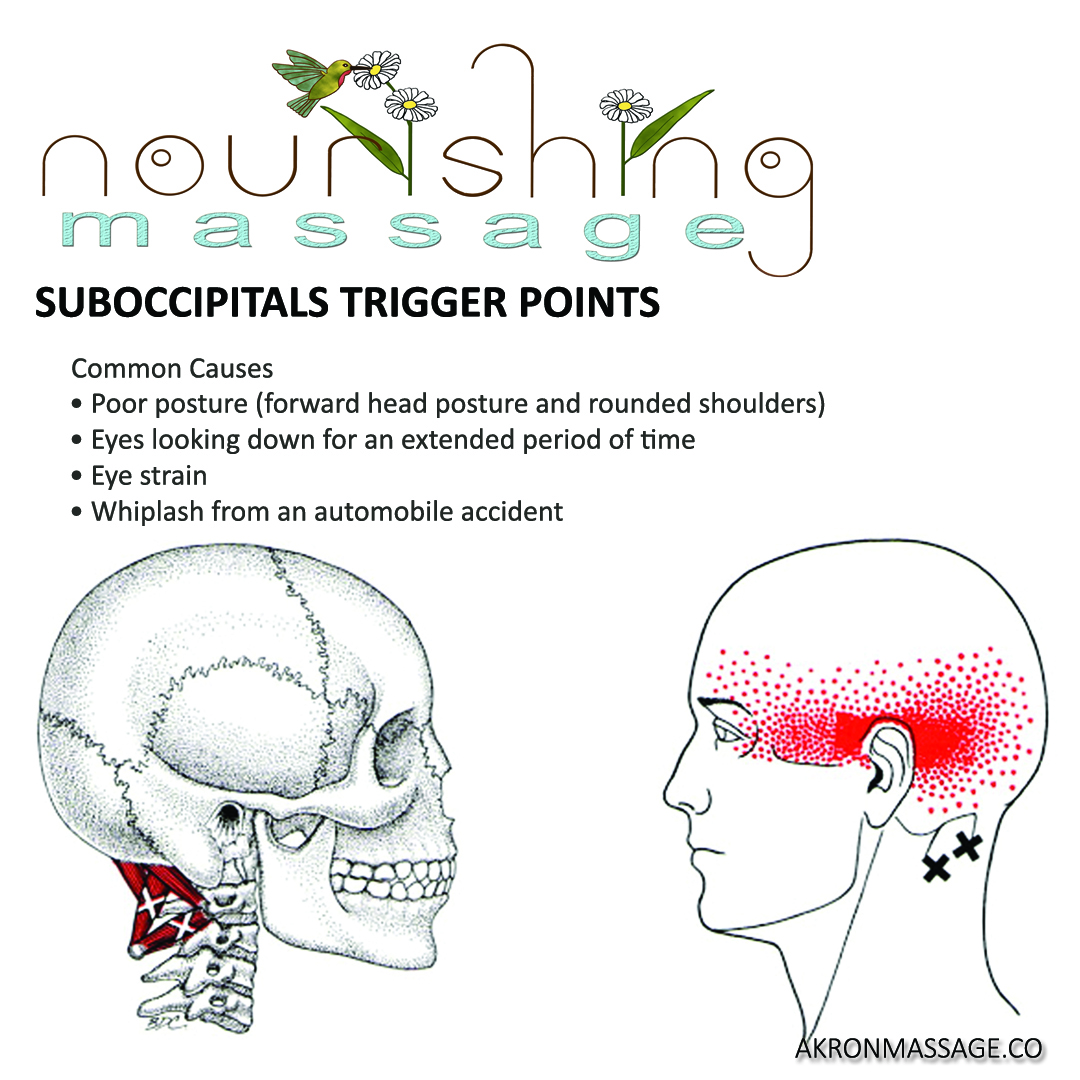Suboccipital Trigger Point Release and Stretch
The Suboccipitals consist of 4 pairs of muscles that are situated underneath the occipital bone at the base of your skull. These pairs of muscles are the Rectus Capitis Posterior Major and Minor, and Obliquuus Capitis Superior and Inferior. These muscles are innervated by the suboccipital nerve. These muscles collectively extend and rotate the head.
These muscles commonly cause a headache that feels like a really tight headband that is horizontally around your ears and eyes. Research has shown that the Rectus Capitis Posterior Minor also attaches to the Dura Mater. The Dura Mater is the connective tissue that surrounds your brain and spinal cord. Due to this connection tightness in this muscle can cause those headaches due to disrupting your normal cerebrospinal fluid fluctuations and by also compressing the vertebral artery and suboccipital nerve. Tightness in this muscle can also cause symptoms of vertigo and tinnitus.
Think about what activities you do daily. Are you looking down at your phone, tablet, or laptop? Are you straining your eyes because your computer screen is too far away? How’s your posture?⠀
The more you know about how your muscles and body function, the better you can take care of them as a whole.
Origin- Cervical Spine C1 (Atlas) – C2 (Axis)
Insertion- Nuchal Line of Occiput and Transverse Process of C1 (Atlas) Action- Rectus Capitis Posterior Major and Minor along with the Oblique Capitis Superior rock head back into extension. Rectus Capitis Posterior Major and Oblique Capitis Inferior Rotate Head to the same side.
Palpation- Base of your skull along on the occiput.
Note- Researchers have discovered that the Rectus Capitis Posterior Minor also attaches to the Dura Mater. The Dura Mater is the connective tissue that surrounds your brain and spinal cord. Due to this connection, this muscle may cause headaches by disrupting normal cerebrospinal fluid fluctuations and as a consequence disrupt the functioning of the vertebral artery and suboccipital nerve.

